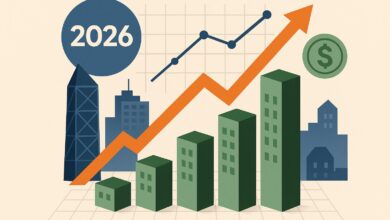Spotting Risks and Keeping Safe: How to Manage the Risks of Landscaping Work in 2024

There is no denying that all workplaces, no matter what sort of work is conducted there, carry with them a certain amount of occupational risk. When it comes to occupational risk, however, not all workplaces are created equal. And there can be a considerable amount of variation in terms of the specific risks and hazards presented by a given workplace setting.
Although it is not necessarily the most dangerous or high-risk workplace setting, landscaping is nevertheless on the higher end of the scale regarding work-related injuries. In fact, according to recent statistics released by the Center for Disease Control and Prevention, they estimate that here in the United States, around 200 landscape service workers die each year as a result of injuries suffered in the workplace. That is in addition to the many thousands of individuals who suffer an injury as a result of their work as landscapers. We begin to get a sense, then, that the landscaping business holds some of the highest levels of occupational risk in America.
Different types of landscaping risks

Although many of the risks associated with landscaping work are common across the many possible landscaping projects you might find yourself engaged in, it is nevertheless essential to consider the various types of landscaping. This is important to bear in mind as it allows us to understand better the different types of risks involved in a project and how we can best prepare ourselves for and manage those risks. With that said, there are two types of landscaping work you might find yourself involved in:
- Hard Landscaping: Hard landscaping involves work on the structures contained within a garden or grounds. Most often, this requires work on garden boundaries such as walls and fencing, as well as other structural elements to a garden, like pathways, fences, decking, paving, and patios.
- Soft Landscaping: Soft landscaping is landscaping work involving plants and vegetation and any other jobs associated with the gardening side of landscaping. It is considered ‘soft’ as it doesn’t involve any structural work.
Landscaping related injuries: what common risks are there?
Within these two broad headings of ‘hard’ and ‘soft’ landscaping, there is an endless number of ways that someone can become injured through their work as a landscaper. However, with that being said, some types of injury are much more common than others. And if you were to look at a full breakdown on the statistics of workplace injuries suffered by workers involved in the landscaping business, the vast majority would tend to fall under the following categories:
- Weather and temperature related injuries: In many places around the US, extreme weather conditions can pose a surprising amount of risk for landscaping workers. It includes not only exposure to cold temperatures but, due to the fact you’re spending a lot of time outdoors, there is also an increased risk of heat-related illnesses such as heatstroke and sunburn.
- Impact injuries: Impact injuries occur most often when a landscape worker is struck or crushed by an object or machinery. Typically, this happens when a worker is clearing an area, sawing, trimming bushes, mowing, or digging.
- Workplace falls: Falls from height are one of the most common risks posed in landscaping work — particularly where the work involves tree cutting or maintenance — and as such, impact injuries related to falls are common. For this reason, landscape workers need to be incredibly careful when working from height, particularly where ladders are in use.
- Transportation injuries: Although not the most immediately obvious risk when we think of landscaping injuries, it is surprisingly common for landscape workers to get injured while traveling around landscaping sites, particularly where heavy equipment is being transported. Common injuries involve impact injuries sustained from improperly tied down equipment.
Why is it essential to manage workplace risk?

As an employer or someone in charge of employees, you are required by law to ensure that your employees are able to go about their work safely and securely, free from the risk of unnecessary or avoidable harm. This obligation also extends to ensuring your employees are adequately trained to be able to keep themselves safe at work.
The legal duties imposed by health and safety law includes:
- A requirement to take reasonable care for your own health and safety, as well as the health and safety of others who may be affected by your work.
- A requirement to comply with instructions or control measures relevant to your work, which includes wearing appropriate personal protective equipment.
- To ensure cooperation between employer and employees concerning health and safety training.
- To correctly report and address any defects with machinery or equipment used in the course of your work.
As you can see, employers and employees have a range of duties and responsibilities which fall under the broad heading of health and safety law. For this reason, it is essential to carry out regular comprehensive workplace risk assessments so that you can properly identify and manage risks.
How to assess workplace risks?
In light of all the risks posed by the landscaping setting, it is incredibly important to undertake a workplace risk assessment when running a landscaping business. Workplace risk assessments are most often undertaken by trained professionals who specialize in identifying workplace risks and suggesting measures that will help you to mitigate them.
Protecting your business

If you are a business owner, ensuring that you are protected from workplace risks involves not only conducting workplace risk assessments and ensuring you have adequate workplace protections in place. It also means you need to ensure that your business is protected if something were to go wrong. For that reason, it is vital to have adequate insurance coverage in place. That cover will ensure an employee can be adequately compensated if they do get injured, and will also protect your business from the costs associated with compensation pay-outs. Ensuring you have adequate insurance coverage not only makes good business sense but will also provide additional protection to your employees.




